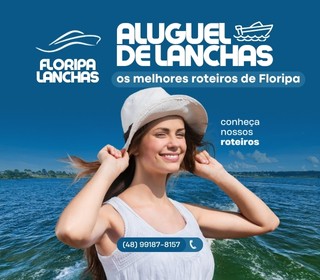Just stroll along Avenida das Rendeiras in Conceição Lagoon that we found those little houses with their nice ladies sewing on a big cushion. The various chopsticks that seem to require hundreds of fingers from the handler are the bobbins. With these instruments and the technique passed down through generations, lacemakers make their stitches in the air, without needing a fabric as a base, which differentiates bobbin lace from other types of embroidery. Among the best-known lace produced on the island are the “Maria Morena" and the "plot”, or lace of seven pairs, which is considered a typical product of Santa Catarina, produced mainly by artisans from the Ribeirao da Ilha, Saint Anthony of Lisbon and Lagoa da Conceição.
This technique does not have a certain origin, but there are researchers who say that it emerged in the XV century, in Flanders, Belgium, from where it spread across Europe, mainly Italy and France, until reaching Portugal and the Azores Archipelago.
In Brazil, they brought the specialty of making lace to embellish church garments and implements, in addition to towels, curtains, sheets and garments for the nobles. On Santa Catarina Island, bobbin lace was influenced by the first Azoreans who settled in the coastal municipalities, arriving in the old Desterro in 6 January 1748.
ADVERTISING
Survival in those times were men working long periods in fishing, with artisanal nets, and women weaving the threads on bobbin pillows, to be sold in the market or exchanged for basic necessities, helping with the family budget. From this cultural tradition passed down through the generations, the popular saying was created “where there is net, there is income".
Making bobbin lace is an art so admired around here that it got a special day. In homage to the preserved history that came from the Azores and is still in our reality today, 21 October is Lacemaker's Municipal Day. And so that this tradition is maintained, the Foundation Franklin Cascaes maintains a nucleus of bobbin lace workshops in Bento Silvério Cultural Center, since 1990, located in Lagoa da Conceição.
Bobbin Lace Reference Center
To preserve cultural activities in Brazil, the Ministry of Culture created Promoart, a program that toured the country to learn about and value cultural events. In Santa Catarina, bobbin lace from Florianópolis and Ukrainian embroidery from Itaiópolis were chosen to represent the culture of Santa Catarina.
The Bilro Rent Reference Center is the result of a partnership between Promoart, the city of Florianópolis and Casa dos Açores, as it was found that Florianópolis has the largest number of lacemakers in the South of Brazil, justifying the creation of the Center. Today it offers visitors to Casarão da Lagoa, headquarters of the Reference Center for Bobbin Lace in Lagoa da Conceição, a permanent exhibition with works by Florianópolis lacemakers, a small shop with bobbin lace items, from decoration to clothing, a library and a museum center with a collection of photos, videos and books. The activities of the Renda de Bilro Reference Center are not restricted to Casarão da Lagoa, other communities such as sambaqui, south swamp, Red River e Narrow they benefit from bobbin lace workshops and a management course for lacemakers.
ADVERTISING
The workshops offered are taught by the lacemakers themselves, who teach how to make the pique – a mold used to design the lace – and how to make stitches on pillows and thus preserve the craft that arrived on Santa Catarina Island in the XNUMXth century. The Florianópolis City Hall pays the lacemakers who will guide the students and the workshops are free.
Another service offered by the project is the management course aimed at lacemakers who have the bobbin as a source of income, as it showed the feasibility of producing bobbin lace in groups, which facilitates the work of the lacemakers when there is a large order.
In 2011, when researchers from the Bilro's Rent Reference Center began counting lacemakers in Florianópolis, there were an estimated 500 lacemakers. The researchers managed to register 250 lacemakers. These records are archived at the Franklin Cascaes Foundation, where they will serve as a source of research for those interested.
Address
Bento Silvério Cultural Center – Casarão da Lagoa - Rua Henrique Veras do Nascimento, 50 – Lagoa da Conceição.
Association of Artisans of Casa da Alfândega
The Associação dos Artesãos da Casa da Alfândega was created in 2006 with the aim of uniting artisans within a "magical" artistic and cultural space, the Artesanato Gallery in the former Casa da Alfândega. The gallery project aims to sell handicrafts made by artisans in the State. The Casa da Alfândega currently has around 100 artisans, exhibiting their work, each with their own craft skills.





